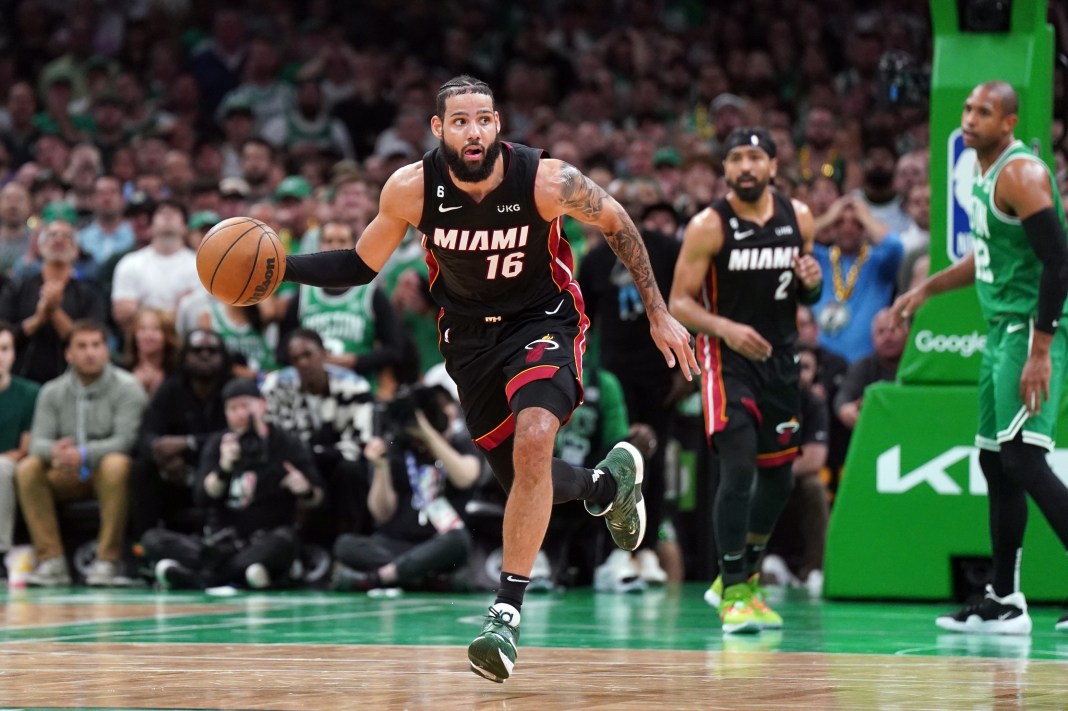If football is the undisputed king of sports betting, basketball is second in line to the throne. The NBA has always been popular with casual fans. But the success of daily fantasy sports and the sweeping legalization of sports betting in the U.S. has taken NBA betting to another level. The NBA’s Adam Silver was the first pro commissioner to come out in favor of legalized betting in 2014. The league has embraced betting as a way to connect with fans and grow the sport.
Like football, basketball is predominantly a spread and over/under sport (also known as the total). This means bettors are tasked mostly with picking not just who wins each game but by how much (who covers?) and how many points will be scored by both teams combined.
Bettors must also pay the juice (the tax, commission or “vig,” short for “vigorish,” that you must pay the sportsbooks for them to accept your bets) on all spread and over/under bets. The juice is typically 10 cents, known as “-110.” Assuming standard juice of -110, this means bettors must win 52.38% of their NBA bets to break even and overcome the tax. Anything above that means you’re turning a profit. Bettors should strive to win 53% to 55% of their plays. The sharpest bettors win at about a 60% clip.
Let’s break down a few helpful tips for bettors entering the 2019-20 season.
Home-Court Advantage Is Overvalued
Home-court advantage is real, but it’s also overvalued. Oddsmakers typically will award 3 points for the home court. Public bettors love betting home teams, which leads to the books shading lines further toward home teams, forcing casual bettors to take overpriced numbers. This creates added value to buy low on road teams.
According to Bet Labs Sports, road teams have gone 8,867-8,584 against the spread (with 310 pushes) since 2005. This accounts for a 50.2% cover rate. But because of the juice, you would be down -110.14 units. This means a $100 bettor taking every road team would have lost $11,014. This sounds pretty awful, but in comparison, home teams have covered only at a 49.2% clip and lost -727.32 units. So home teams were nearly seven times worse ATS (against the spread) compared with road teams.
Rested Road Dogs
The public also likes to bet on favorites, which makes sense. If you’re going to bet, you might as well back the “better” team expected to win. However, this bias also creates shaded lines toward favorites, creating added value to back underdogs. Underdogs “get” points while favorites “give points.” Since 2005, both dogs and favorites have been losing bets straight up, but dogs have been slightly better, covering at a 50.2% clip (-338.07 units) compared with favorites (49.8% ATS, -498.88 units).
The key is focusing on road dogs, specifically those enjoying a rest advantage. The NBA plays a busy 82-game schedule with lots of traveling and back-to-back games. Bettors should always consider these factors when placing a bet, especially when one team has tired legs and the other is rested. One great spot to lean on: road dogs coming off four or more days of rest against teams on two or fewer days of rest. These rested road dogs have covered 56% of the time since 2005, with 24.1 units won.
Look For “Severe” Line Moves
One of the few ways to capitalize on home-court advantage is backing dogs with big line moves in their favor. In the NBA, it’s common to see a line move a half-point or a full point in either direction. But when you see a big 1.5-point line move, or even more, that means it was likely caused by some big smart money from professional bettors. Since 2005, home dogs receiving at least 1.5 points of line movement in their direction (think 8 to 6.5), have covered at a 56.4% rate with 33.26 units won and a 9.6% return on investment.
Go Contrarian And Take Advantage Of Inflated Lines
Because the NBA market is flooded with recreational money from Average Joe bettors, going contrarian or “betting against the public” is a smart move. More often than not, the public loses. They bet with gut instinct and bias. And the house always wins. So going against the crowd mentality is a profitable long-term strategy. The easiest spots to bet against the public are the nationally televised prime-time games on TNT or ESPN that get lots of attention and heavy bets from public bettors.
One of the best ways to go contrarian is to look for inflated lines in which the public is extremely heavy and lopsided on one team and forces the books to move the number further toward that popular team. By being savvy and betting on that unpopular underdog, you just got an extra point or more of value simply due to the public artificially inflating the number.
Since 2005, when a team is receiving 30% or less spread bets with an inflated line (think 10 to 11), these teams have covered at a 55.1% rate and won 101.93 units with a 7.4% ROI. If the line is inflated two points or more, the cover rate jumps to 58.7% with a 14.5% ROI. Think of it this way: When two teams are facing off and one looks like a massive blowout and easy cover, it’s smart to buy low and back the unpopular team, especially if they’re getting extra points. They’ll likely lose, but their chances of covering increase dramatically.
Divisional Unders That Drop
Unders are a smart bet in general because, just like favorites and home teams, the public is biased toward overs. They want to see a fun, exciting, high-scoring game and root for points. The sportsbooks know this and will shade numbers toward overs, creating added value to bet unders. Since 2005, unders have cashed at a 50.3% clip but lost -285.97 units due to paying the juice. Again, a big loser. But overs have been much worse, losing -552.22 units.
The key is betting unders with sharp money in which the total drops at least half a point. These unders have won 22.69 units since 2005. But the real gem is divisional unders that drop. Teams in the same division play each other several times every season. This leads to built-in familiarity, which makes it easier to game-plan and benefits defenses because they know what to expect. When divisional teams face off and the total falls at least one point, signaling sharp action, the under has cashed at a 54.6% clip with 81 units won. A $100 bettor taking each one would be up $8,100 over this period.
It’s also important to research “pace” statistics when betting totals. This takes into account the average number of possessions each team has per game. A high pace is great for overs, while a low pace benefits unders.
Know Referee Tendencies
All officials want to get the calls right. But they’re human. Some lean toward home teams, some toward road teams. Others side more with favorites over underdogs. Some call lots of fouls and help overs, while others “let them play,” which benefits unders. You shouldn’t bet a game specifically based on referee tendencies, but knowing them can be important if all the refs working a game lean the same way. For example, visitors are 55.2% ATS ( 41.24 units) since 2005 when Brent Barnaky refs games. Unders are 56.1% ( 55.34 units) with Eric Dalen. Overs are 57.4% ( 41.38 units) with Violet Palmer.
Shop For The Best Line
The sports betting market is fluid and constantly changing. Just as in life, timing is everything. And it’s not just about picking the right side but also getting the best number. Bettors should shop for the best line before placing their wagers. Make sure to have access to multiple sportsbooks. Search out the book offering the best odds. If you want to bet the Miami Heat, make sure you seek out the book offering Heat 6.5 while others are posting 6. Extra half-points make a world of difference over a long season.
Manage Your Bankroll
Bettors should try their best to remain disciplined and limit their plays to the most profitable games of the day over the long season. Betting lots of games assumes more and more risk and can lead to big ups and downs. A great long-term approach is flat betting — betting the same amount on every game and risking only 1% to 5% of your bankroll per play. A good medium is 3%. If you’re starting with a bankroll of $100, this means betting $3 on each game. It may not sound sexy, but it will sustain you over the course of the long haul and keep you alive through the inevitable ups and downs of betting.






